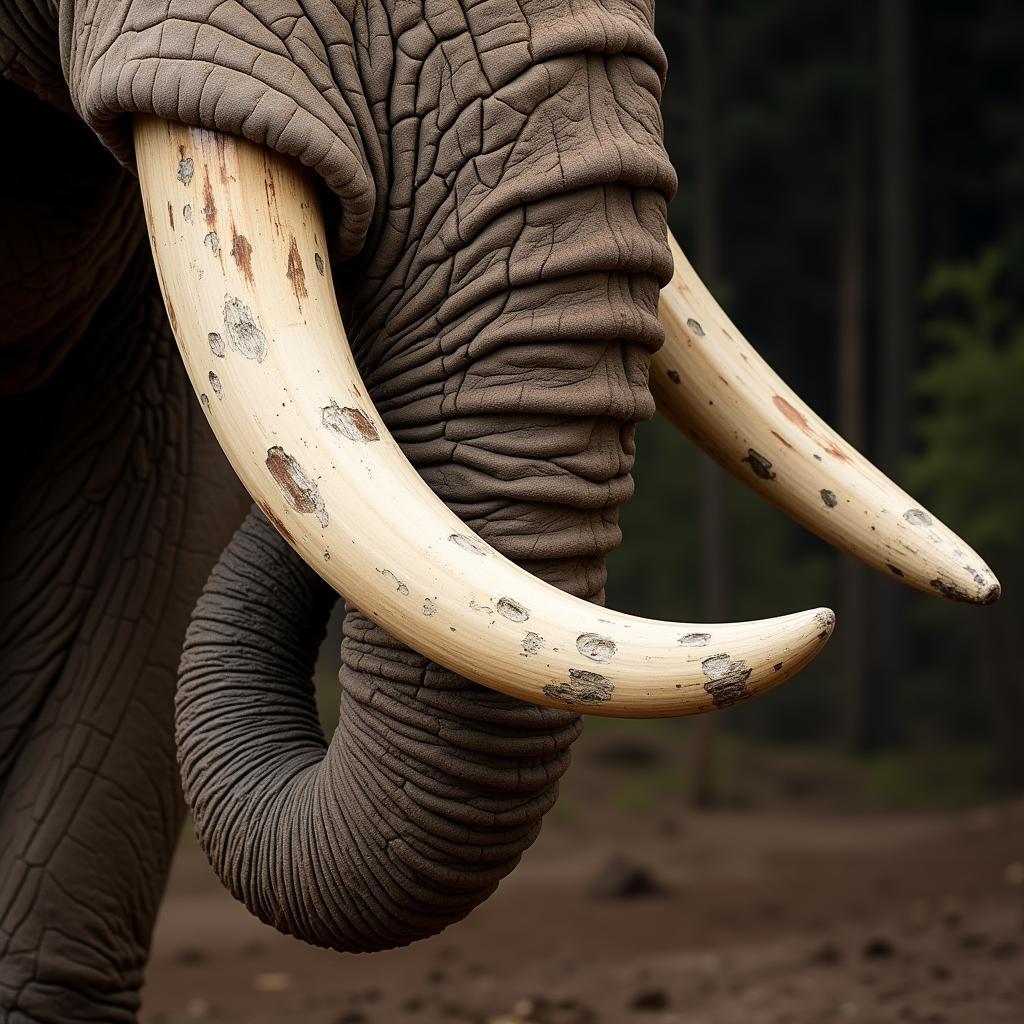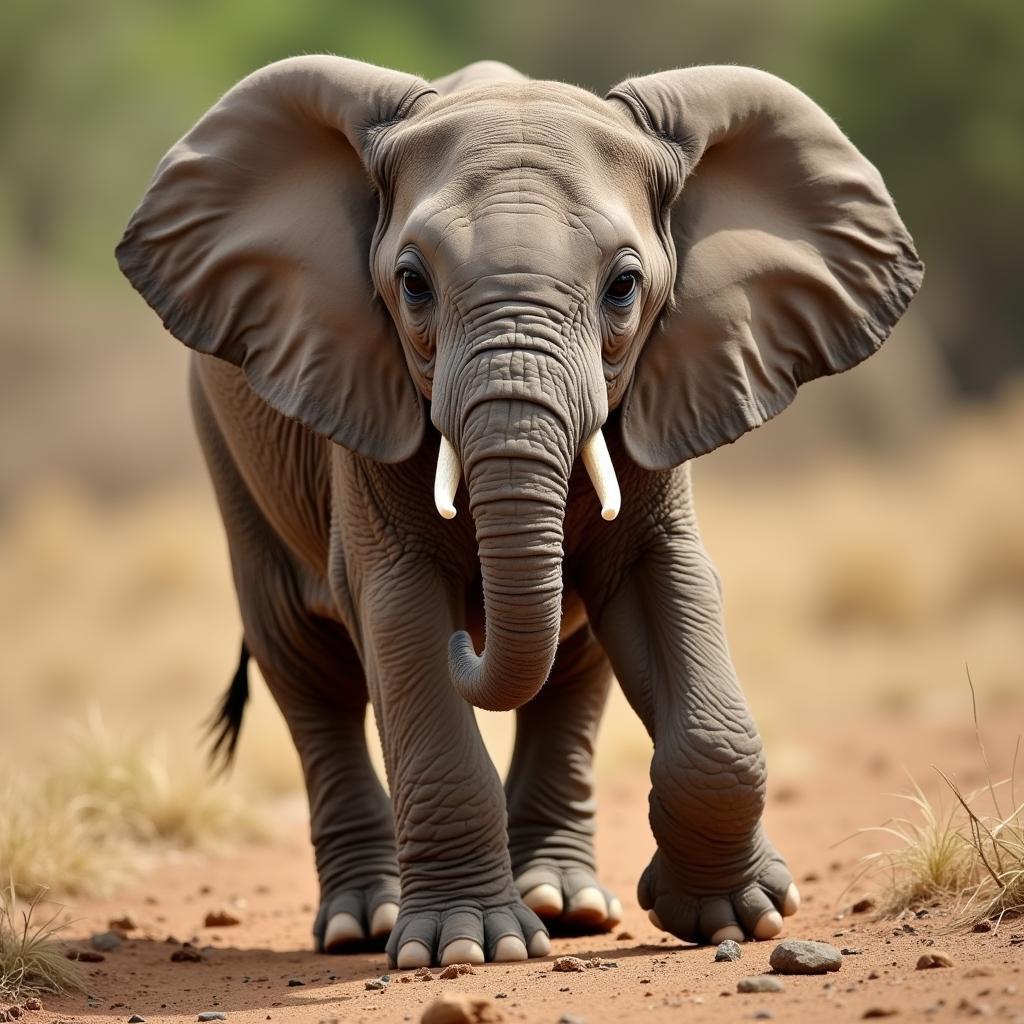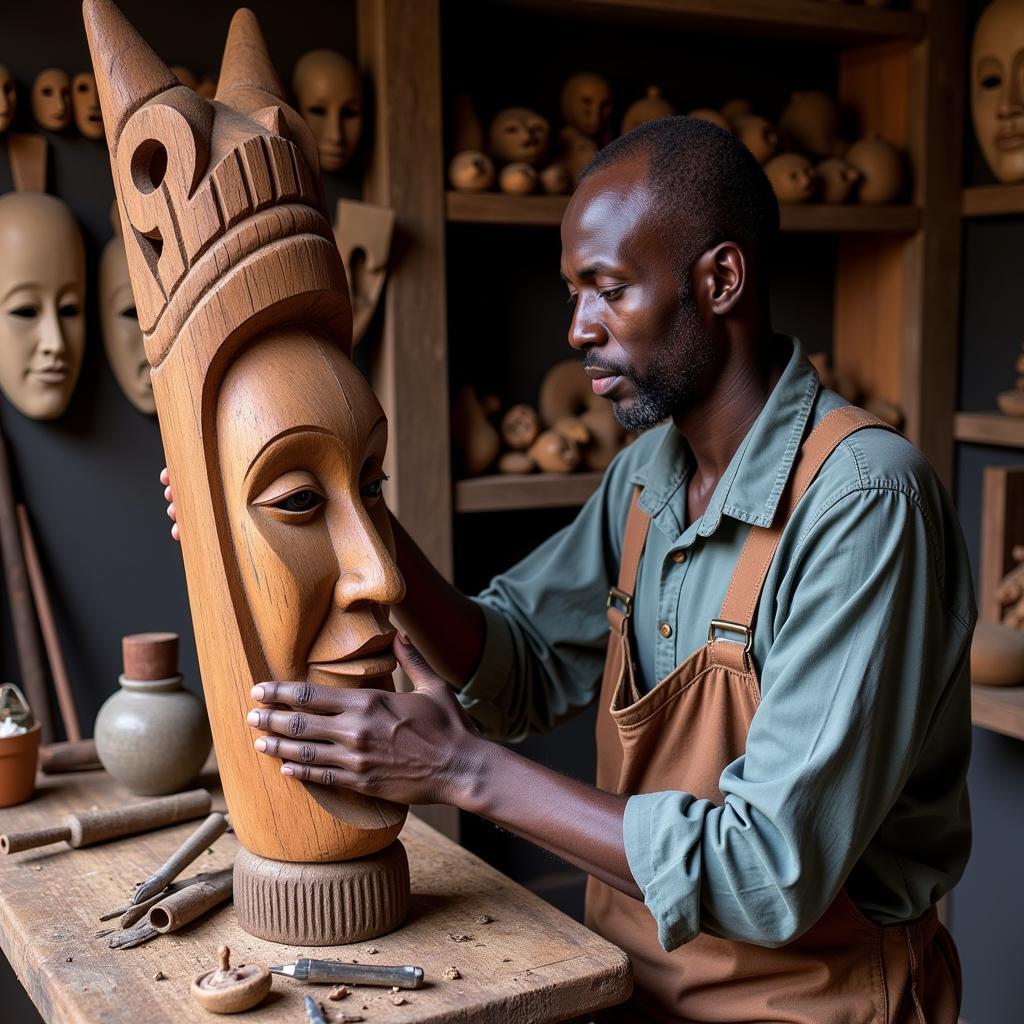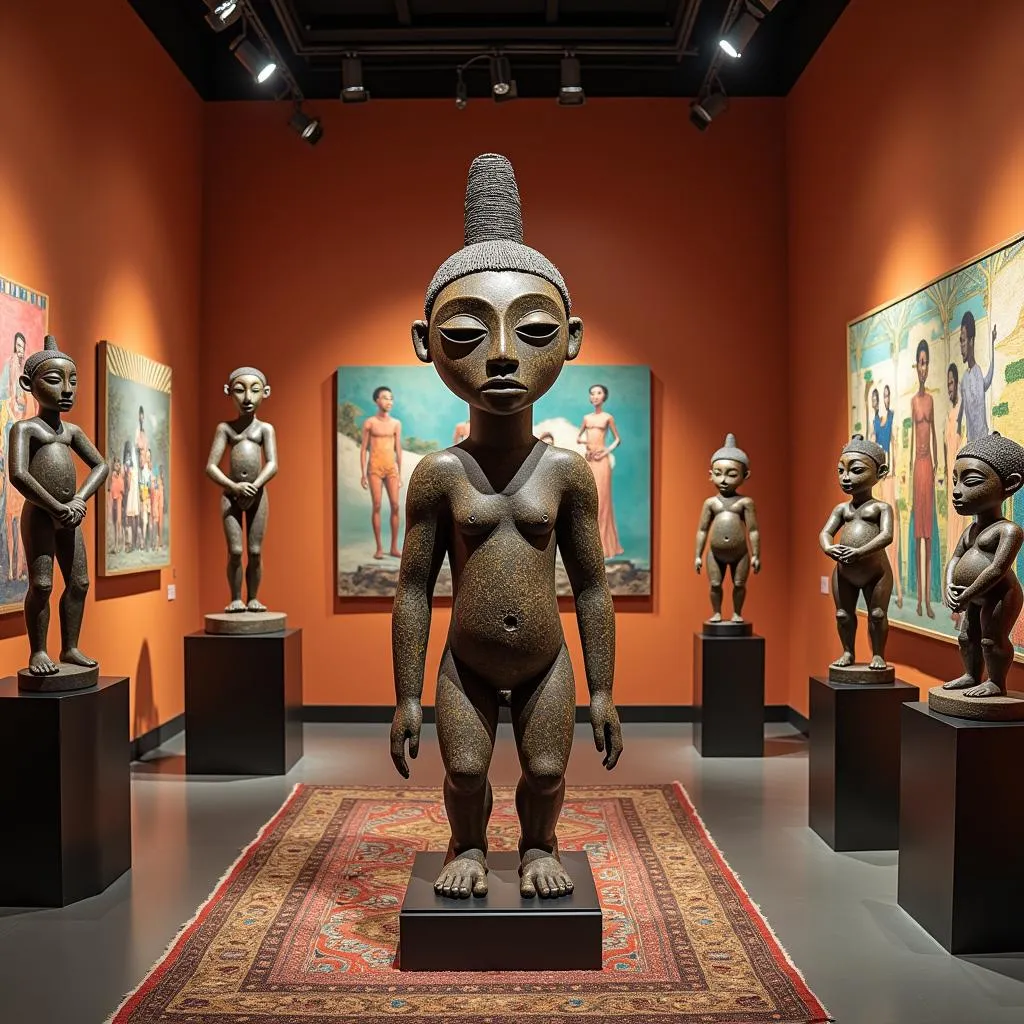The Fascinating Names of African Elephant Teeth
African elephants, majestic creatures with their iconic tusks, have captivated humans for centuries. These tusks, essentially modified incisor teeth, are not just for show; they play a crucial role in the elephant’s life. While we commonly refer to them as tusks, these remarkable teeth actually have specific names depending on their position and stage of development.
 African Elephant Tusks: A Close-up View
African Elephant Tusks: A Close-up View
Deciphering the Terminology: More Than Just Tusks
The term “tusk” itself is a general term referring to any elongated, protruding tooth that extends beyond the lips of an animal. In the case of African elephants, they possess two sets of tusks, each with its own distinct name:
Milk Tusks: The First Set
Like human babies, African elephant calves are born with a set of “baby teeth,” including miniature tusks called milk tusks. These first tusks are small, usually less than 5 cm long, and emerge when the calf is around 6-12 months old. They are much softer and more fragile than adult tusks, composed primarily of dentine with a thin layer of enamel.
Permanent Tusks: A Symbol of Strength and Maturity
As the elephant calf grows, so do its tusks. Around 1-2 years of age, the permanent tusks begin to emerge, pushing out and replacing the milk tusks. These permanent tusks are considerably larger and stronger, composed of solid dentine with the enamel eventually wearing away. They continue to grow throughout the elephant’s life, with males generally having larger and heavier tusks than females.
 African Elephant Calf with Milk Tusks
African Elephant Calf with Milk Tusks
Why the Different Names Matter: Understanding Elephant Development
The distinction between milk tusks and permanent tusks is more than just semantics. It offers valuable insights into an elephant’s age, development, and overall health. For researchers and conservationists, recognizing these differences is crucial for monitoring elephant populations and understanding their growth patterns.
Milk Tusks: A Sign of Vulnerability
The presence of milk tusks immediately signals that an elephant is young and vulnerable. These small tusks are not yet strong enough for serious tasks like digging or defense, making the calf more reliant on its mother and herd for protection.
Permanent Tusks: Indicators of Age and Social Standing
The size and condition of an elephant’s permanent tusks can provide valuable information about its age, health, and even social standing within the herd. For example:
- Larger, heavier tusks are generally associated with older, more dominant males.
- Broken or worn tusks can indicate past battles, injuries, or nutritional deficiencies.
- The absence of tusks in some elephants, particularly females, can be a natural variation or a result of poaching pressure.
Beyond the Names: Protecting African Elephant Teeth
Understanding the different names and significance of African elephant teeth is not just about appreciating their biological marvels. It’s also a call to action for their conservation. The illegal ivory trade, driven by the demand for elephant tusks, poses a significant threat to these magnificent animals.
By learning about and valuing these incredible creatures, we can contribute to efforts aimed at protecting them and ensuring that future generations can continue to be amazed by the sight of an African elephant with its majestic “teeth” on full display.
FAQ: Unveiling More about African Elephant Teeth
1. Do all African elephants have tusks?
While most African elephants, both male and female, have tusks, there are populations where some elephants, particularly females, are naturally tuskless. This is due to genetic variations within the species.
2. What happens to an elephant’s milk tusks?
As the permanent tusks grow, they push the milk tusks out. The milk tusks eventually fall out, similar to how humans lose their baby teeth.
3. How fast do African elephant tusks grow?
African elephant tusks grow throughout the elephant’s life, at an average rate of about 17 cm (7 inches) per year. However, the growth rate can vary depending on factors like diet, health, and environmental conditions.
4. Are African elephant tusks hollow?
No, unlike the teeth of some other animals, African elephant tusks are solid dentine. The only “hollow” part is the pulp cavity at the base of the tusk, which contains nerves and blood vessels.
5. Can you tell an elephant’s age by its tusks?
While tusk size can give a general idea, it’s not a foolproof method for determining an elephant’s exact age. Factors like individual growth rates, wear and tear, and potential breakage can make it challenging to accurately estimate age based solely on tusks.
For more fascinating insights into the world of African elephants, check out these articles:
Need help planning your dream African safari?
Contact us:
- Phone: +255768904061
- Email: kaka.mag@gmail.com
- Visit us: Mbarali DC Mawindi, Kangaga, Tanzania
Our dedicated team is available 24/7 to assist you in creating an unforgettable experience.



